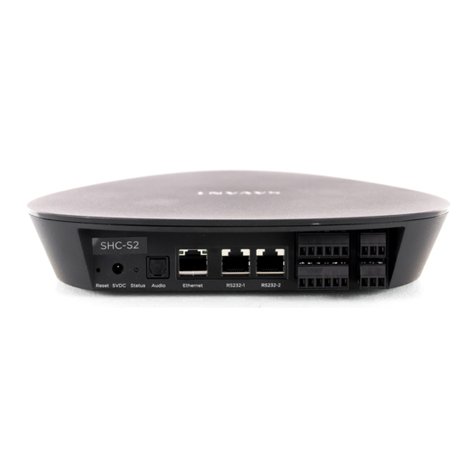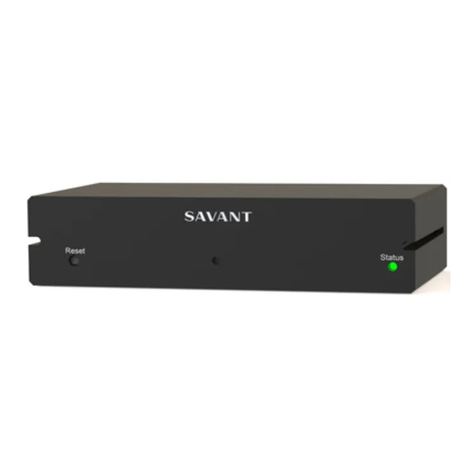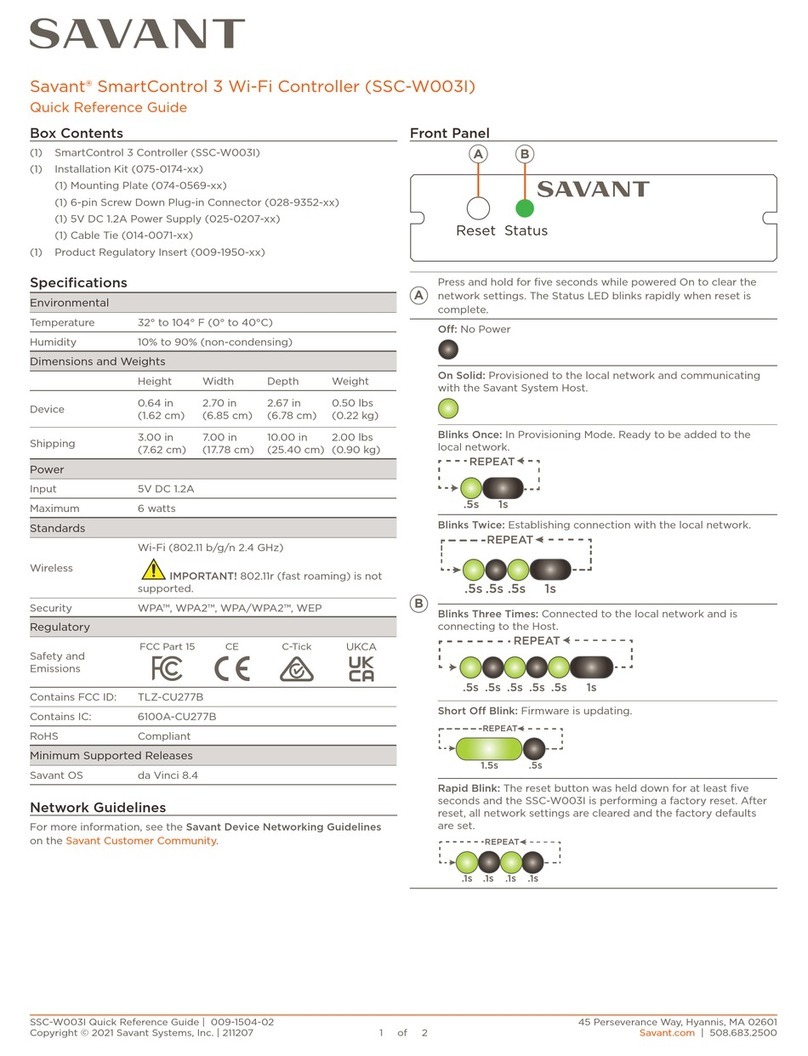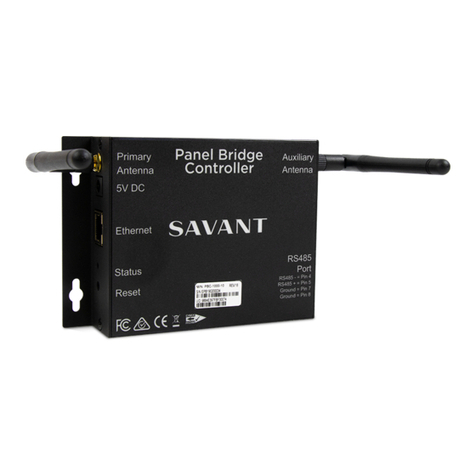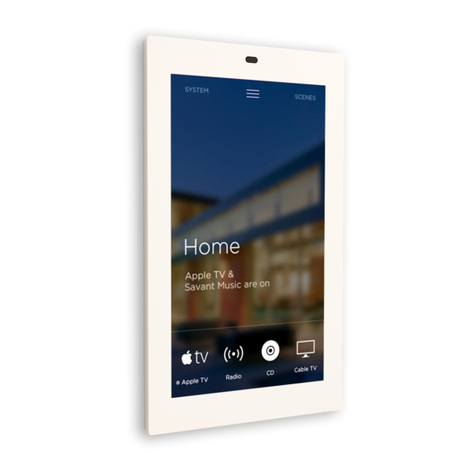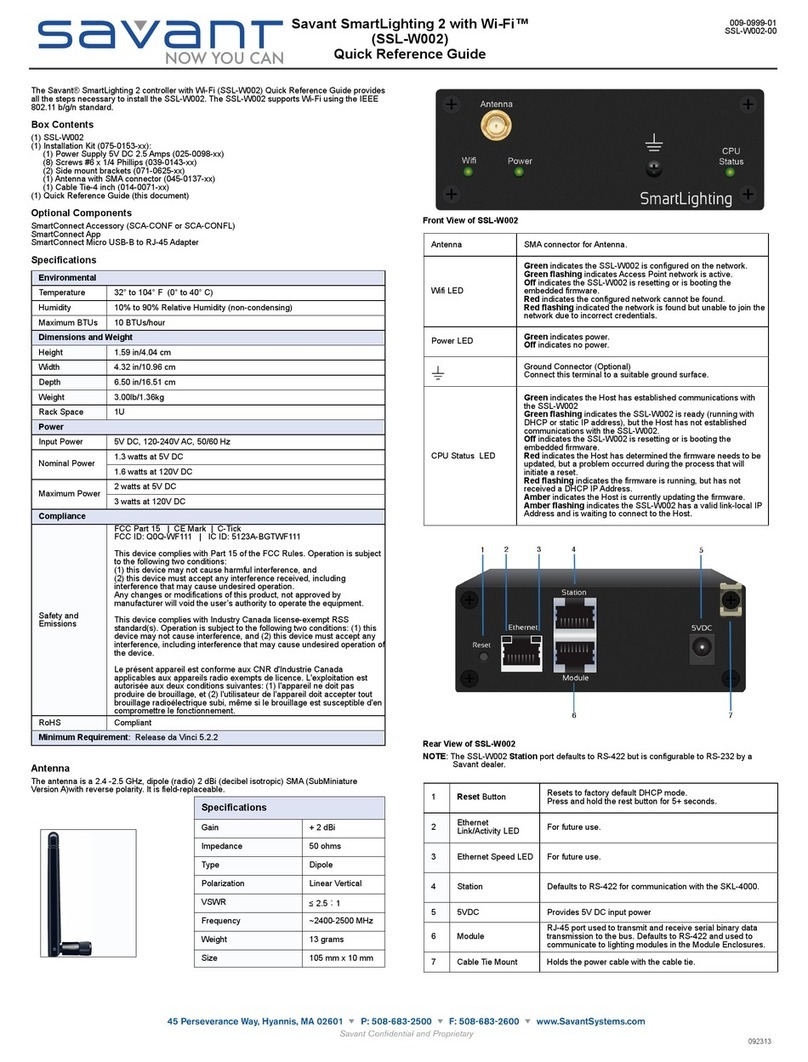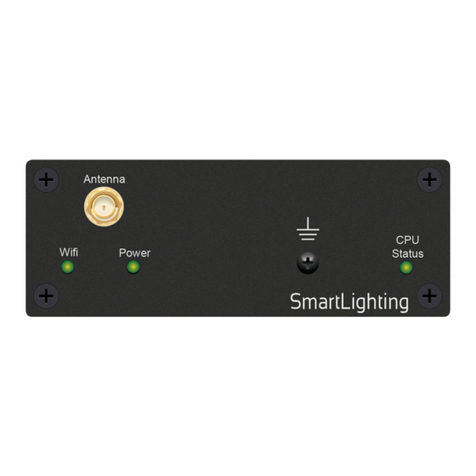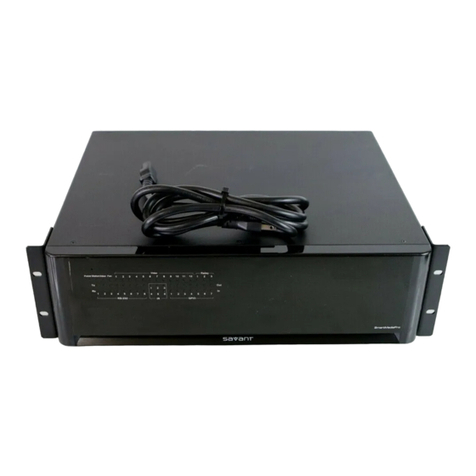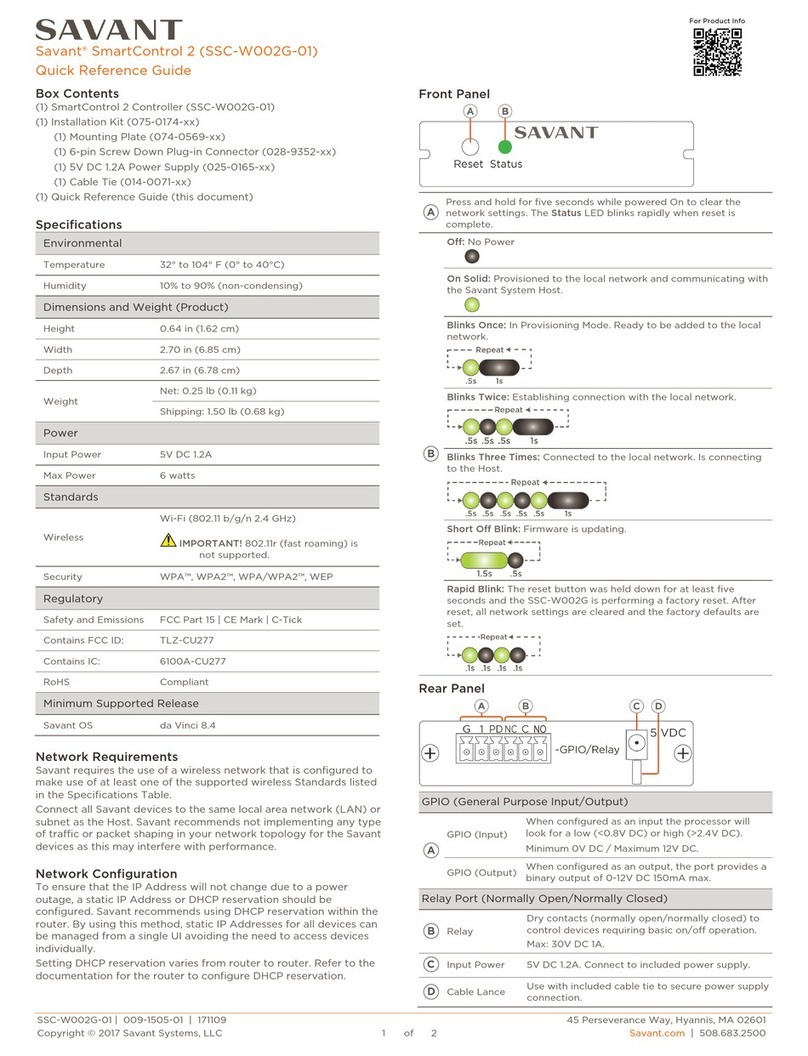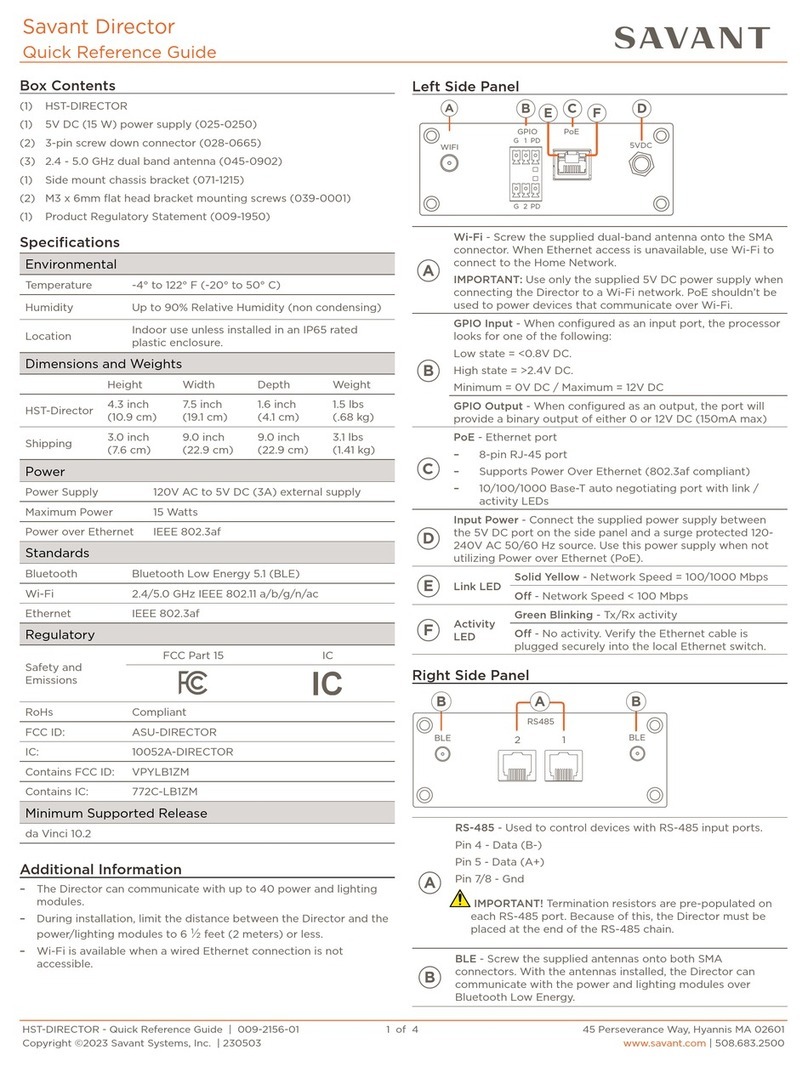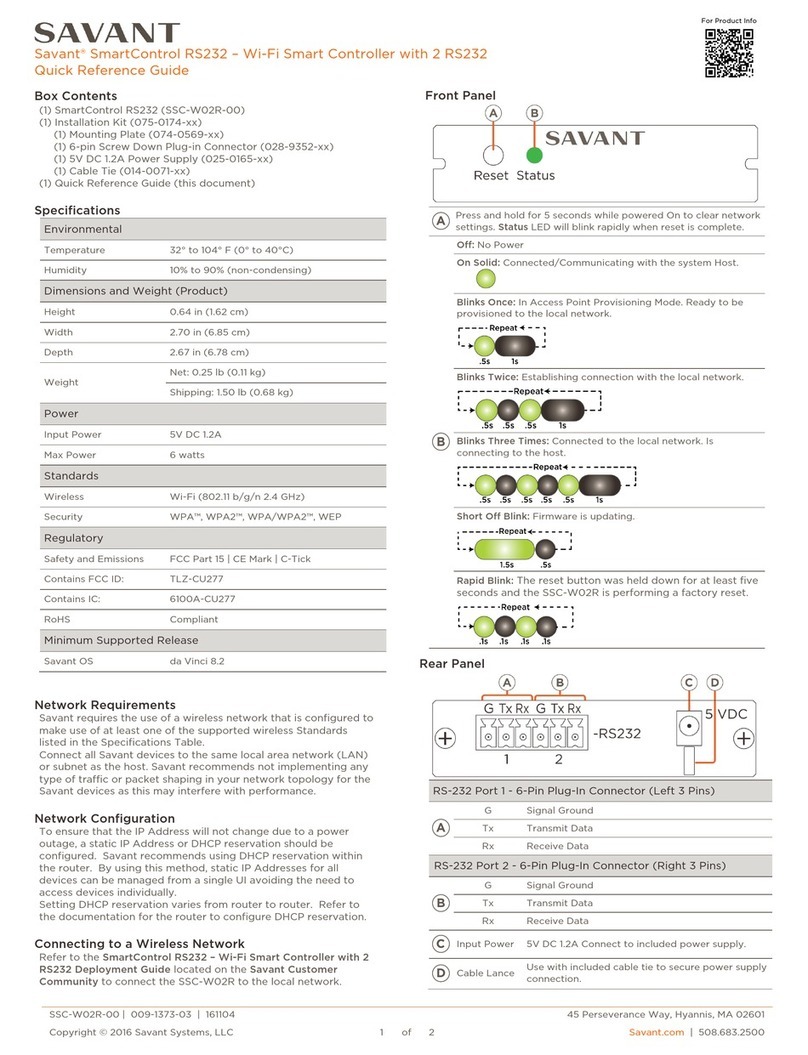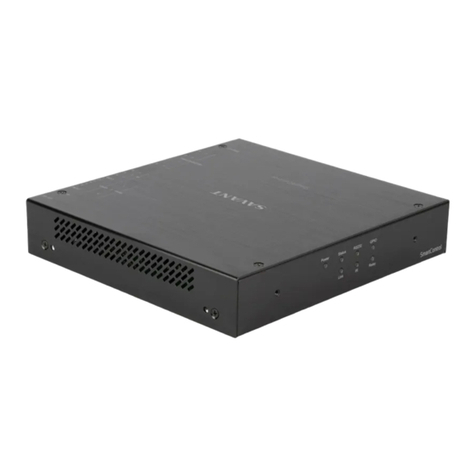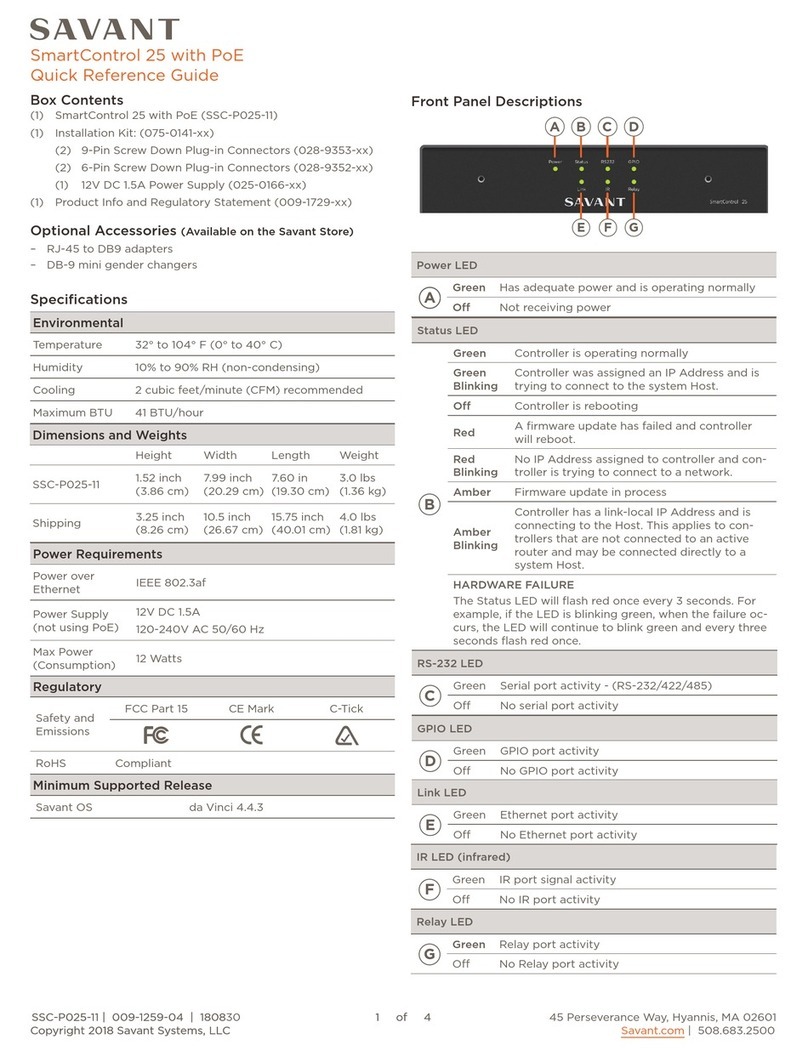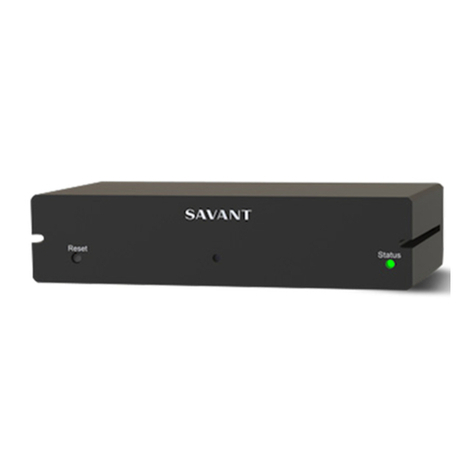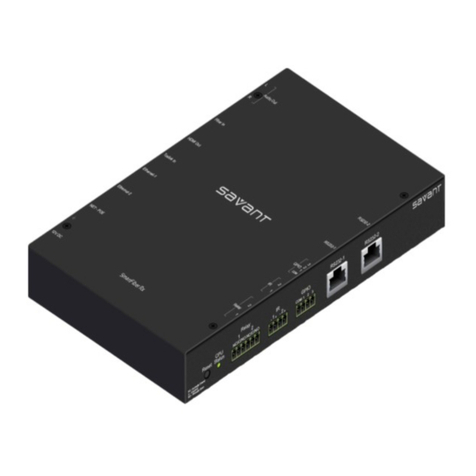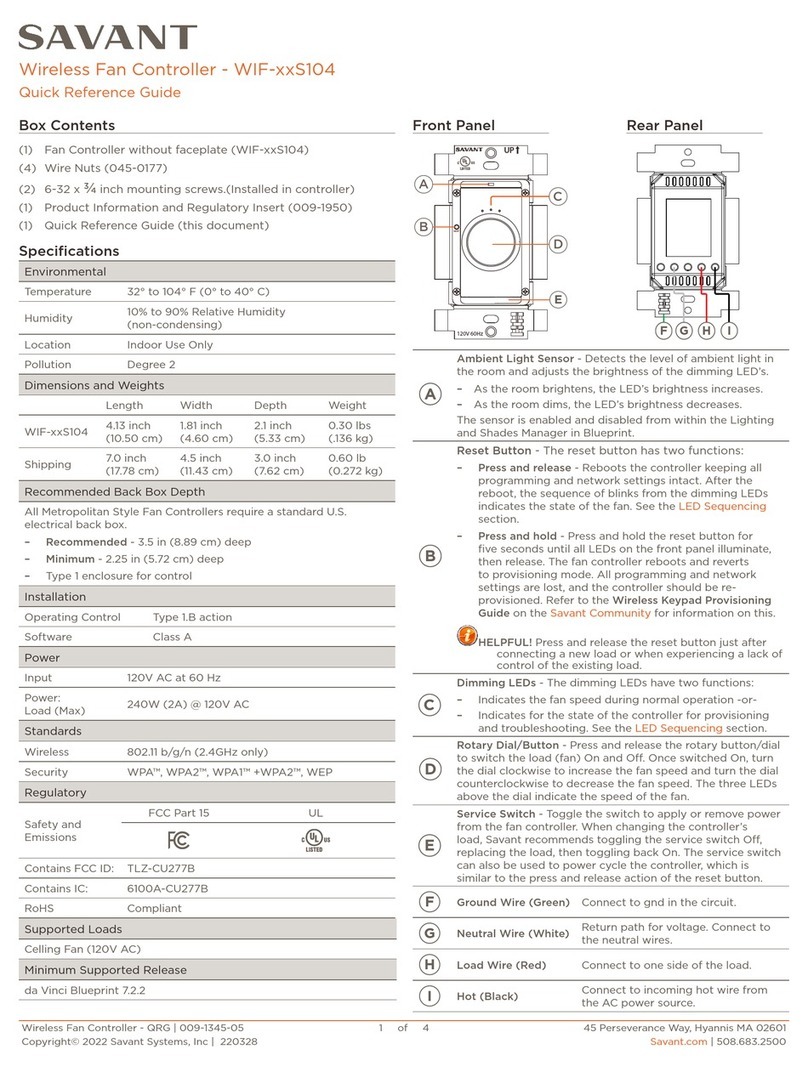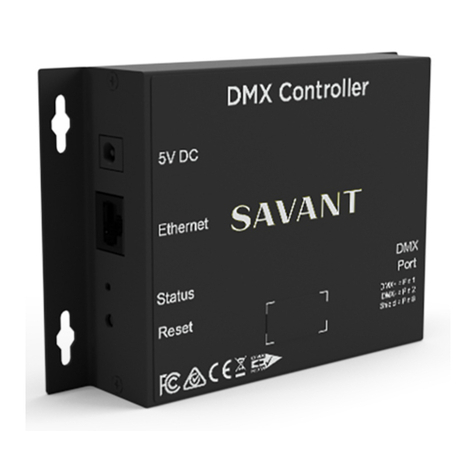
SSC-W002G Quick Reference Guide | 009-1505-02 45 Perseverance Way, Hyannis, MA 02601
Copyright © 2021 Savant Systems, Inc. | 210607 2 of 2 Savant.com | 508.683.2500
Rear Panel
CD
AB
5 VDC
-GPIO/Relay
1CG
PD
NC
NO
GPIO (General Purpose Input/Output)
GPIO (Input)
When configured as an input the processor will
look for a low (<0.8V DC) or high (>2.4V DC).
Minimum 0V DC / Maximum 12V DC.
GPIO (Output) When configured as an output, the port provides
a binary output of 0-12V DC 150mA max.
Relay Port (Normally Open/Normally Closed)
BRelay
Dry contacts (normally open/normally closed) to
control devices requiring basic on/o operation.
Max: 30V DC 1A.
CInput Power 5V DC 1.2A. Connect to included power supply.
Cable Lance Use with included cable tie to secure power
supply connection.
GPIO and Relay Wiring
General Purpose Input/Outputs (GPIO) are binary I/O ports used on
Savant® controllers used to trigger an action within the system. Events
can be the control of a device, such as turning on an amplifier (output)
or detecting a state change for a device (input) to perform a workflow.
The left three pins of the supplied 6-pin connector are used for GPIO
connections.
Relays are used when a contact closure (normally open or normally
closed) is needed to activate a device. An action such as raising or
lowering shades, opening or closing a gate, or sending control signals
to an HVAC system are a few examples. The right three pins of the
supplied 6-pin screw down plug-in connector are used for Relay
connections.
4 5 632
1
PIN 1 GPIO GND
PIN 2 GPIO
PIN 3 PD
PIN 4 NC
PIN 5 Relay COM
PIN
Use White Stripe
6 NO
GPIO Pull Down Resistor (PD) Usage
GPIO pins are configured as inputs and are pulled high to 12V while
the Host is booting. To make the GPIO signal low during a Host reboot
and/or a power cycle, attach the GPIO 1 pin to the PD pin. The PD pin
is a 1k ohm pull down resistor (to signal ground) which keeps the GPIO
output below 0.8V during processor boot times.
4 5 632
1
PIN 1 GPIO GND
PIN 2 GPIO
PIN 3 PD
PIN 4 NC
PIN 5 Relay COM
PIN
Jumper to use
1k ohm pull down
resistor
6 NO
Making Connections
1. Remove power if applied.
2. Pull to remove the terminal block from the rear of the controller.
3. With a small flat bladed screwdriver,
turn the screws on top of the
connector counterclockwise until
the silver crimps in the rear of the
connector open enough to slide the
wire(s) into the square slots.
4. Strip back the insulation on each of
the wires ¼ inch. Insert the stripped
wires into their proper ports. Do not
allow more than ⅛ inch of bare wire
exposed.
5. Turn the screws on the top of the connector clockwise until the
crimps tighten around each wire. Tug on each wire a bit to verify
they are installed securely.
6. Plug terminal block back into the rear of the controller.
7. Reapply power.
Connecting to a Wireless Network
To provision the SSC-W002G-01 controller onto a local network, one of
the following methods can be used:
–SmartConnect Application – da Vinci 8.4 or later
–Embedded Web UI – All da Vinci builds
Both methods are described in the SmartControl 2 – (SSC-W002G-01)
Deployment Guide available on the Savant Community.
Additional Documentation
Additional Documentation is available on the Savant Customer
Community.
–SmartControl 2 Wireless Controller [SSC-W002G] Deployment
Guide
–SmartConnect Software Reference Guide (009-1046-xx)
–Relay and General Purpose Input/Output Profiles App Note
–SmartControl 2 SSC-W002G Troubleshooting Guide
< 1/8 inch
bare wire
exposed
